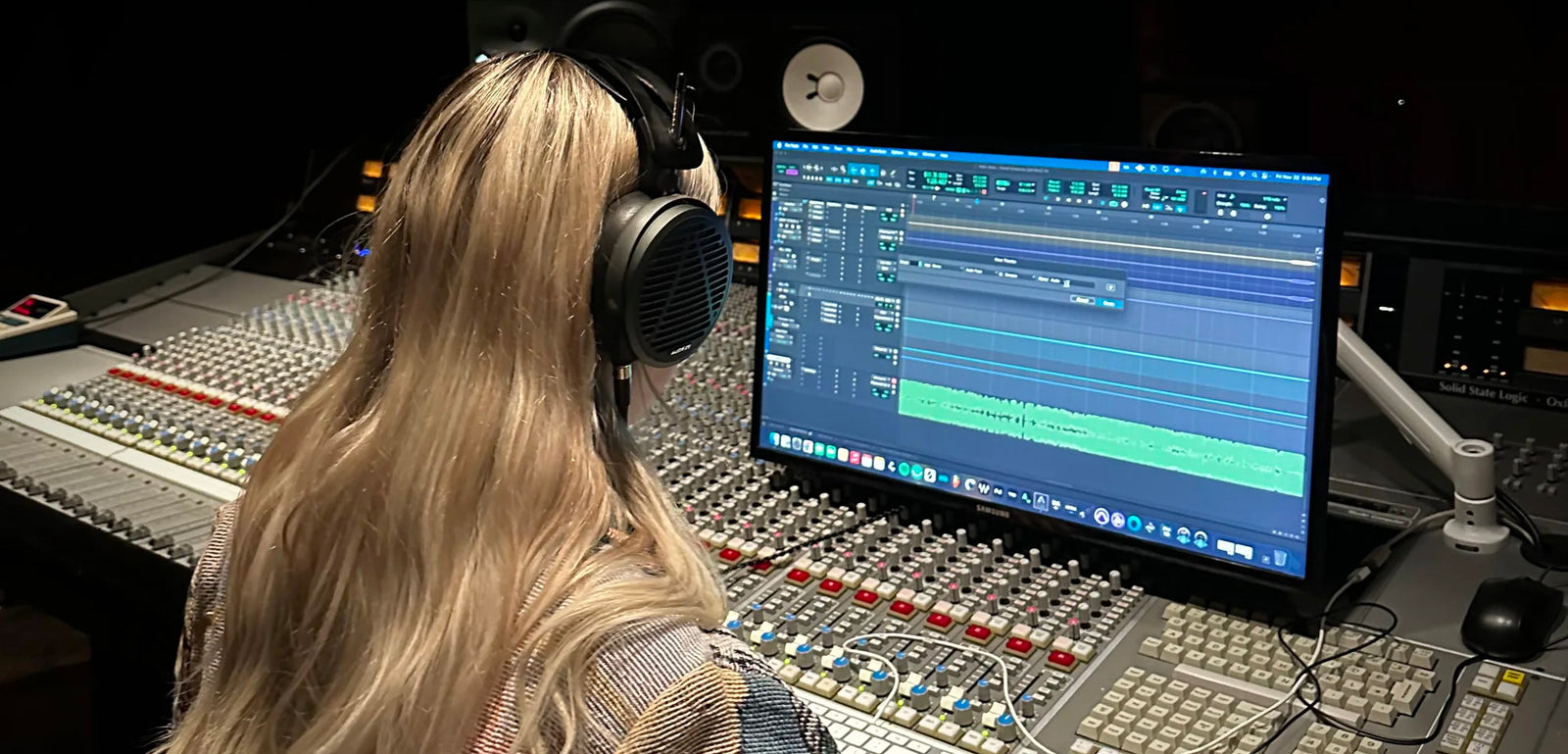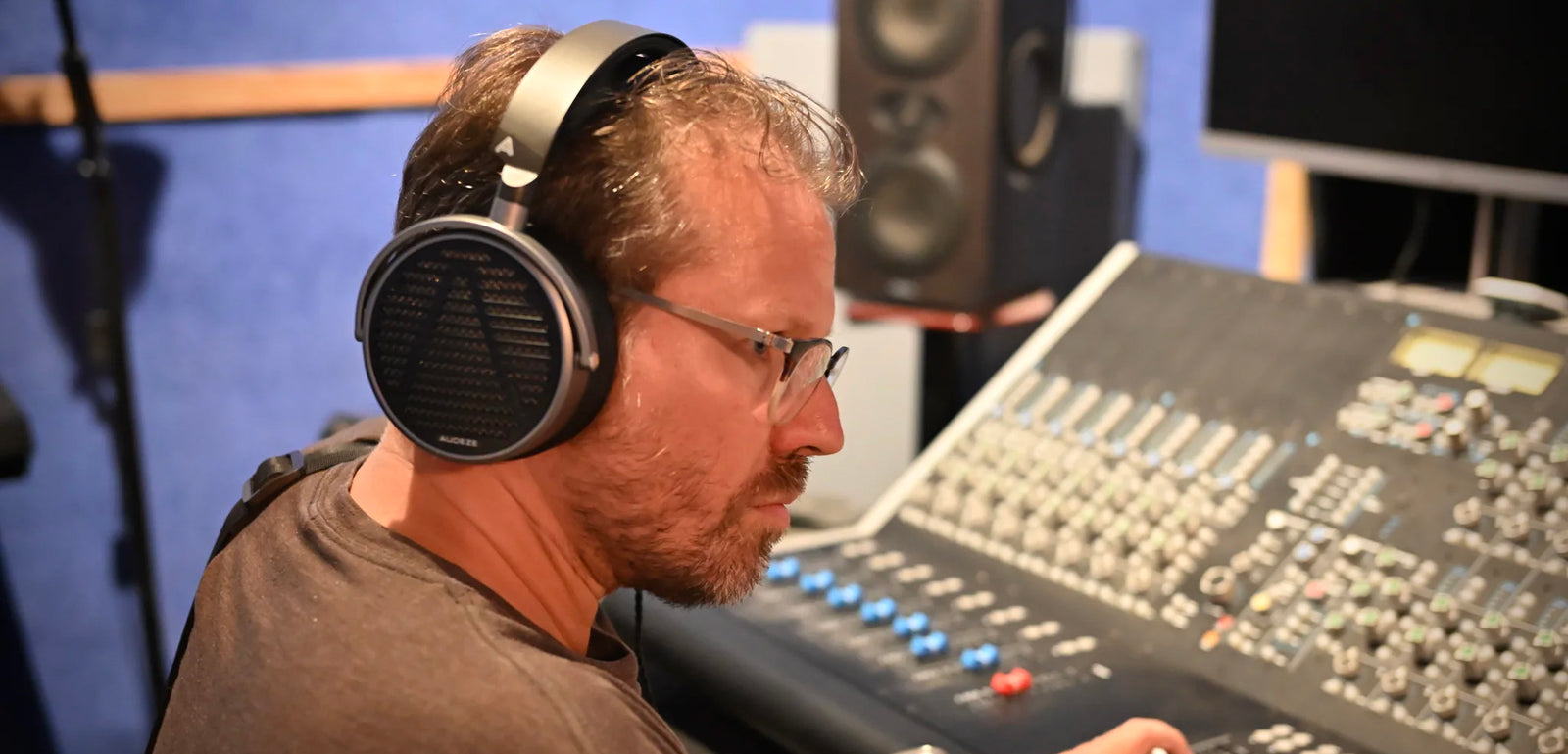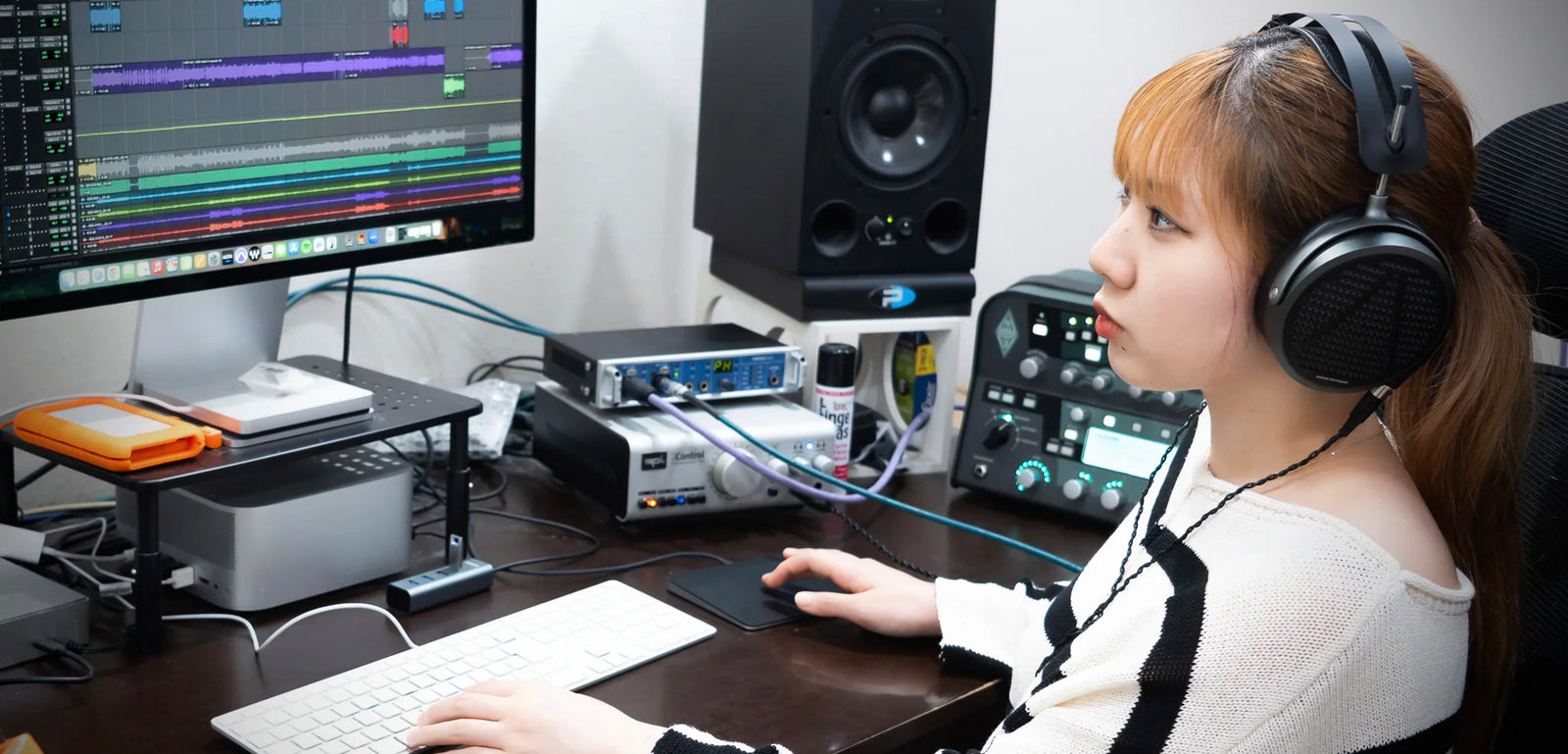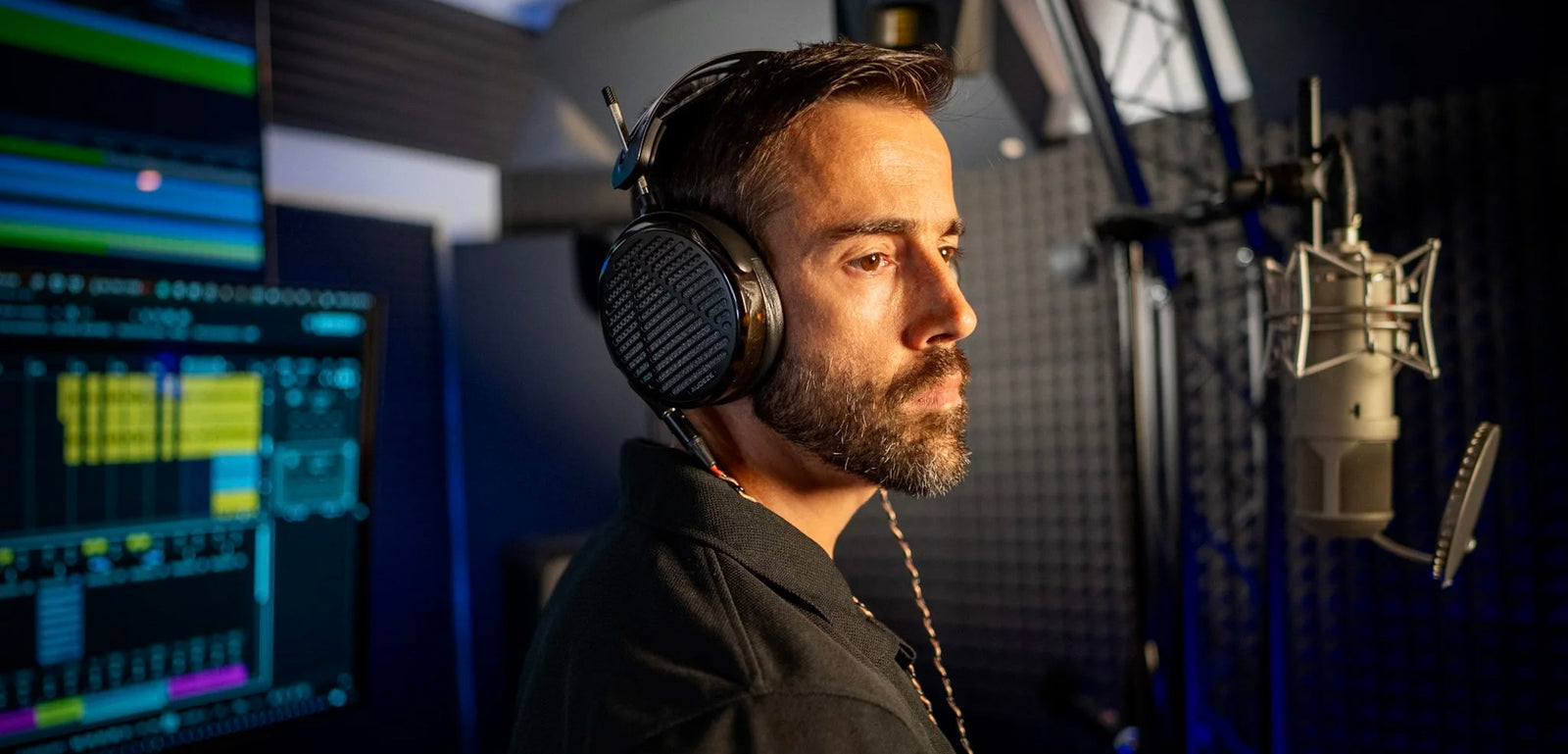
Angie Randisi is a highly acclaimed recording engineer and mixer from Canada, with three Grammy nominations and multiple platinum records to her name. Known for her technical prowess and keen ear, Angie has worked with some of the biggest names in the industry, including Lil Baby, Young Thug, Tory Lanez, 42 Dugg, Glorilla, and PartyNextDoor.

Josh Rogosin defined the tiny desk sound and has recorded and mixed over 800 shows, including Taylor Swift, Sting and Shaggy, Anderson .Paak, Mac Miller, Nile Rogers, and Bono and the Edge. His mixes have been heard on YouTube over a billion times. Now he’s introducing Global Sound and Ghost Light Concerts, traveling the world to discover how location inspires people to make music.

Li-sa-X is a Japanese female Guitarist/Composer who was born in 2005. Her cover video of RACER X's "Scarified," which she posted when she was 8 years old, garnered more than 5 million views and attracted a lot of worldwide attention. After watching this video, the composer of the song Paul Gilbert (MR. BIG) invited her to join his online guitar school as a scholarship student. She made her professional debut at the age of 12. Her playing technique has been described as “the future of rock."

Santaflow is an artist, composer, producer, entrepreneur, teacher and showman, politically incorrect and with millions of followers around the world (mainly in Spanish-speaking countries). After more than 20 years of career, he feels fitter and more eager than ever to continue creating songs and making them sound better every day. A restless lover of the world of sound, he works with several of the leading brands in the sector.
April 11, 2022
J. Todd Wines is a Nashville-based mix engineer who specializes in tour sound and broadcast audio. He currently works with Grammy and industry award winning artists Miranda Lambert and Lauren Daigle, to deliver the artist’s sonic vision to live audiences. Todd has also enjoyed mixing and working with Hunter Hayes, Big & Rich, Olivia Newton-John, Cyndi Lauper, Gretchen Wilson, Vince Gill, and more.

Most of my work is fleeting. I often question how I can be so passionate about an intangible work—but it creates an experience through feeling and emotion that leaves indelible marks in one’s memory.
With that said, though, the broadcast work I enjoy allows for opportunities like the one I recently did with Lauren Daigle for BYUtv. The network has an annual special called Christmas Under the Stars. Along with Lauren’s band and tour staff, we traveled to Provo, UT to capture the special. There were two locations: the primary being a hall that was converted for a socially-distanced, in-the-round audience environment; and the ”off-site” being a converted store front made to look and feel like a New Orleans styled jazz room. My role in the onsite work was making sure we got the best capture. This meant making sure the reference mix was well built for the offline broadcast mix engineer and finding and encouraging the best performances of Lauren and the band. The offsite work was done collaboratively via email with the mix engineer, Aaron Merrill. We went through the performance line by line to ensure that every bit of Lauren’s nuance and message was ready to be showcased through the network’s outlets and platforms. The level of detail with an eleven piece band was no small feat. Thankfully Aaron delivered well mixed roughs. We were able to hone the balance of the sectional ensembles, place solos, and create space to support Lauren’s vocal performance.
I have been mixing live shows for nearly 20 years. I love mixing FOH. It’s hard to imagine doing any other work that I love as much. It lends itself to creativity, problem solving, and service to others; it ticks a lot of the boxes for me! Thankfully it has also given me opportunities in some cases to lead, production manage, and teach. It has also led to the broadcast work and offline mixing I get to do, including podcasts and one-offs.
My parents were not musical, but encouraged some spark they saw in me by providing piano lessons. I played cello in school orchestra, sang in choirs, and played guitar and bass in bands with my buddies. I had a choir teacher and church youth leader who, independently and at about the same time, gave me opportunities to help with sound in different performance situations. I landed a job at my hometown music store through what may have been my best business negotiation ever: I’d show up every weekday to work 4 1/2 hours for 3 hours pay as part of a scholastic work study, which led to working directly for the manager who was building a regional sound reinforcement and production company at the time. I dreamed about attending Belmont University to study guitar and though it got me there (and to Nashville), I realized that my greater passion was for mixing music rather than playing.
I don’t remember music in my parents’ house very much, but it was always on in the car. My dad listened to music from the 50s and 60s. My mom listened to 80s and 90s AC and country. As churchgoers, there was the catalog of the Baptist hymnal, (and though I haven’t seen one in years, those are melodies and stanzas I return to frequently). Music ed and lessons gave me the opportunity to experience and love classical, baroque, and romantic music. The Beatles catalog is what I used to learn guitar and bass as a teen.
Today, I tend to enjoy short form singles. I want to hear well crafted melodies, lyrics, and production. Harmonic transitions inspired by Gospel and R&B get me every time. I’m a sucker for steel guitar or twin fiddles. And though, for me, there are very few “top to bottom” albums, I am finding they are not as rare as unicorns.
I have been incredibly blessed with great mentors who shaped me and paved a way for me. Alan Hulsey of Palmetto Sound Works gave me my first paycheck for doing production audio and was the first to send me out with a truck full of gear. Frank Baird’s voice still rings through about responsibility, timeliness, and seeing the job for what it is given the environment. Phil Scobee taught me to dream, design, and listen technically.
But Hugh Johnson, Vince Gill’s long time FOH engineer and PM, not only took me on my first tour, but probably has had the greatest impact on the way I listen musically. He hired me shortly after graduating from Belmont while freelancing around town. (Funny enough, it was after a showcase for Sony Nashville that included Miranda as a new artist.) He invited me to join him to check out a new console platform, Digidesign Venue, at Sound Image. Execs from Sound Image and Digidesign were there; everyone went around introducing themselves; Hugh introduced me: “This is Todd Wines, and he is going on the road with me” then he turned to me and finished by saying, “if you want.” I was dumbfounded…and honored. I could not have imagined what I was embarking on. Working under Hugh as his A2 and listening to the incredible musicianship of Vince and the band he’d put together of Nashville’s best is still a highlight of my career and a standard by which I judge myself and the talent I mix.
As part of one of the tours I worked on, the artist did a ticketed Q&A prior to doors opening. Fans were given the opportunity to ask the artist questions in the performance space. An MC walked through the venue amongst the audience with an RF mic to field questions and the artist used the vocal mic to respond (the same one used for sung performance). After the first few of these events, the artist manager came to me asking to record these with the idea that it would be turned into a podcast at some point. The fastest way for me to achieve this was through the use of a 2-mix USB recorder. BAD IDEA. Not only were the mics were not iso’ed, the gain was set cooler than optimal for recording (I wanted more fader throw in the live environment) which meant I didn’t hear the noise as it was being tracked. Although it may have been suitable for archive it was a nightmare to edit and remix. Every chair squeak, every whisper, air handlers, line noise, etc. were very present and heard when everything was brought up to an appropriate level.
In hindsight I would have had three mics in use: the vocal mic for addressing the audience, the Q&A mic, and a lav to iso the responses solely for the recording. Secondly, and probably more importantly, I would have multi-tracked the mic inputs independently and used the the 2-mix for reference only. iZotope RX7 Advanced and Acon Digital Restoration Suite saved the project, which wound up being a successful podcast series.
Bricasti M7. I’ve warned many to be careful before listening—once you hear the power, clarity, and believability of the reverbs this unit is capable of, nothing else will compare or satisfy in the same way. I don’t want to work without one (or two) at this point."
Smaart v8. I spend a lot of time optimizing speaker systems. I do want a good experience for myself, but I believe I am hired to represent the artistry of the musician to the ticket-buying audience. It is of utmost importance to do the best for the most. I try to eliminate the “cheap seat” mentality. I could not do that consistently, day-to-day without the use of Smaart v8.
Yamaha Rivage. I can work on other platforms, but I’d rather not. If I’m mixing a live performance, this is my console platform of choice.The hardware is reliable and feels good under my hands. The sonic performance is heads above the competition.
QLab. This piece of software makes live production easier. It allows for creative workflows and simplifies many of the tasks that I otherwise wouldn’t have enough hands or time to accomplish in a moment.
Appreciate the moment you are in. We can learn in any of it, even if it may mean learning what not to do. Work with different artists and vendors to become better rounded as a mixer and professional. Choose humbleness; confidence and arrogance are not the same. Realize who you are hired to serve—although a mix engineer is afforded opportunities for artistry, it is ultimately a service role. Understand that your human hearing mechanisms do not perform the same way every day—develop benchmarks and routines that support you when you are not at top performance. As you are learning to listen and mix, do not become infatuated and distracted with lesser supportive “voices” in the mix, and by turn giving it more weight than is deserved—aspire to hear and create the whole.
The LCD-XC have become my constant reference. With the work I do mixing FOH and broadcast, I am constantly building and refining my mixes. I also do a fair amount of audio oversight for live events and the Audeze headphones give confidence in the requests that I am making of other mix engineers when going through approvals prior to performances airing or streaming. One of the most surprising aspects that I have found is how well FOH mixes that I work through offline in rehearsals translate day to day through large scale PA systems from an array of manufacturers in varying venue types.
Most of the work I have done since owning these has been with Miranda Lambert and Lauren Daigle. I first used these headphones to do oversight for Miranda Lambert’s performance at the Grammys. Eric Schilling was the broadcast music mixer assigned her performance. A person in my role would typically be in the music mix truck with the engineer; but in the height of pandemic, given separation protocols, there were pipe-and-drape booths set up in the LA convention center. Each of the four stations had a display with the director’s live cut, a stereo headphone amp, and a com panel to communicate directly with the music mixer and A2. It was strange simply because it was not the norm, but the Audezes shined. Not only did it go well on site, but I was pleased with how the performance turned out during broadcast. Since that first experience, I have mixed a full length live show for Lauren at the Ryman that streamed for AEG (which I cannot find online, unfortunately), done oversight for a handful of performances on shows like The Voice, American Idol, and various award shows, and mixed FOH for Miranda Lambert’s tour dates which wrapped in October of 2021.
One other place that I really enjoy using the LCD-XC is for the live stream mix I do semi-regularly at Church of the City in Franklin, TN (when I’m not touring). The control room is outfitted with a great console and equipment, but the room feels a lot like a closet. Using headphones bypasses the problem with the room. With the listening “environment” accounted for, I can focus on a highly dynamic and fluid worship service that has a short rehearsal with players, singers, and speakers that change weekly.

Todd's Grammy Workstation (above)

Todd's rack with a pair of Bricasti M7s toward the top (above)